
The 1985 GFA Award winners listed in the Australian Gliding Yearbook.
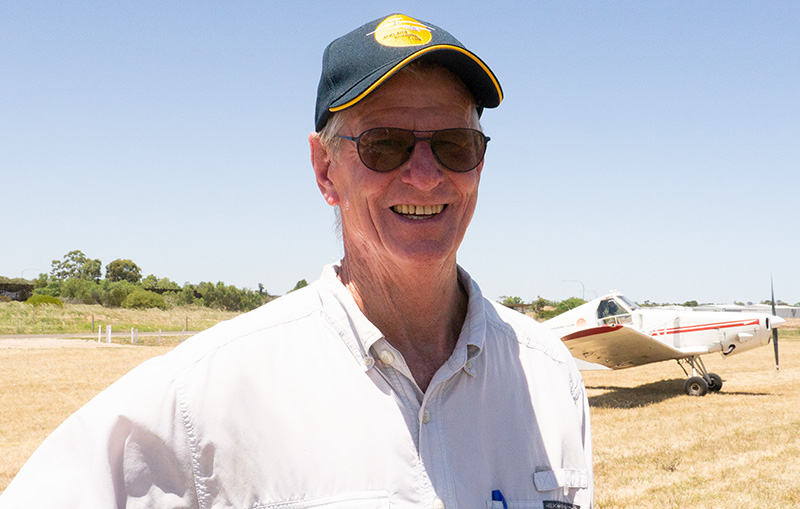
I wonder what our founding fathers would think of the development of gliding in Australia. Would they be happy to see the evolutionary direction that our organisation has taken and the way in which our great sport has developed? Hopefully they would be, although it may not have unfolded exactly as they envisioned.
The Gliding Federation of Australia was formed in 1949 with an amalgamation of state gliding associations and their member clubs. In the early days, Australian gliding developed at a head-spinning rate with peak membership in the late 1970s. We are certainly a smaller organisation now, but we are still just as passionate and dedicated to our sport, with a maturity that only experience can bring.
The past 75 years have seen incredible changes in aviation and gliding is no orphan. Sailplane technology has developed until it now provides a performance level that would have been difficult to envisage 75 years ago. So has the regulatory and bureaucratic reach, but perhaps that’s what helps keeps us safe.
If there is one thing that is constant, it is change. Change brings challenges which must be addressed and overcome, and if handled successfully, improvements will follow. I guess the things that haven’t changed are the very things that bring us all to gliding – our sport is exciting, mentally stimulating, exhilarating and forever challenging – we never stop learning. The aircraft we fly remain at the forefront of aviation technological development and in that regard, we lead the world.
Perhaps the most underrated and undervalued aspect of our gliding community is the mateship and collective effort that are the glue that keeps us together. Volunteerism has been the cornerstone of our creation and, I believe, our ongoing existence. As we face the next 75 years, our biggest challenge will be how to develop as a group of like-minded individuals that are willing to volunteer their time and expertise for the common good of all. Our future and our continued freedom-to-fly will depend on how effective we are at maintaining our collective, synergistic, volunteer effort.
Who is Gliding Australia? Some might just say it is GFA, but it is really the two and a half thousand passionate gliding people who choose to be members of our association. This year we are celebrating our 75th birthday – 75 years young. Happy birthday to all our Members, Clubs and Regional Associations.
Let’s all work hard together at keeping the party going!
Steve Pegler
Chair of the Board
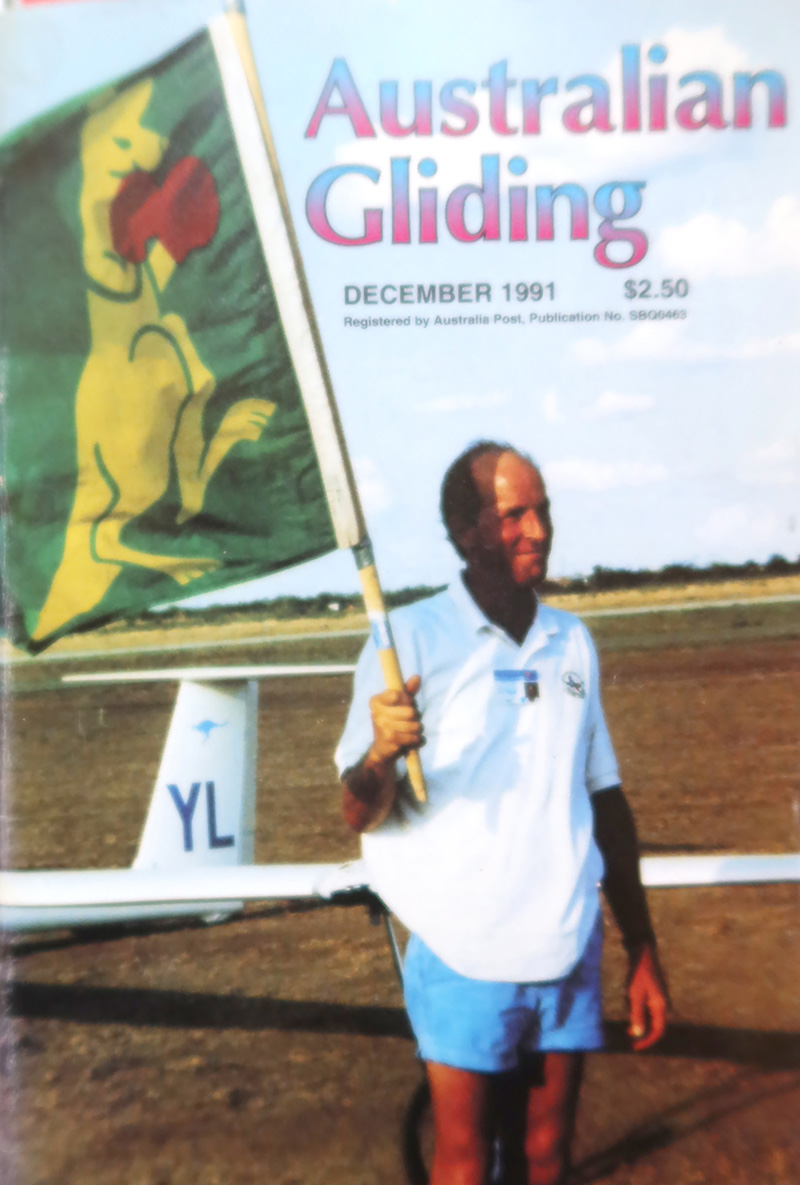
Brad Edwards after winning the 1991 World Gliding Championships in 15m class at UvaldeTexas.
GLIDING FEDERATION OF AUSTRALIA IS FORMED
Gliding Australia was officially formed on 26 June 1949, during a meeting of around 40 supporters from across Australia. The attendees decided to form a federation of state gliding associations, leading to the establishment of the Gliding Federation of Australia.
The first elected officers of the new federation were Mervyn Waghorn as President, Fred Hoinville as Secretary plus two representatives from each state.
Over the following months the committee drafted a constitution for the governance and operational framework. A Technical Committee was also formed and included notable figures such as Geoff Richardson, Norm Hyde and Kevin Sedgman.
The first Gliding Club in Australia
The Geelong Glider Club was founded by Percy Pratt and others on 18 June 1929.
The modern Geelong Gliding Club, formed in the 1950s, maintains a continuous heritage of gliding in the region.
Pioneering Gliders and Launch Methods
The Taylor hang glider, successfully flown on 5 December 1909 on the sand dunes of Narrabeen, is generally accepted as the first pilot-carrying glider in Australia.
Other early experimenters included Allan Betteridge from Adelaide, who built and attempted to fly a hang glider in June 1905, managing several short hops. John Duigan constructed a Wright-type glider in 1908, which he flew in March 1909.
Early pilots flew Primary gliders. Launch methods evolved over time, starting with pilots running into the wind from sand dunes, assisted by wingmen, as with the Taylor glider. In the late 1920s and 1930s, primary gliders were launched using rubber shock cords (bungees) from hills. On level ground, car towing and winches were introduced for greater height and better launches. Advanced gliders like the Grunau Baby were later launched using tug aircraft.
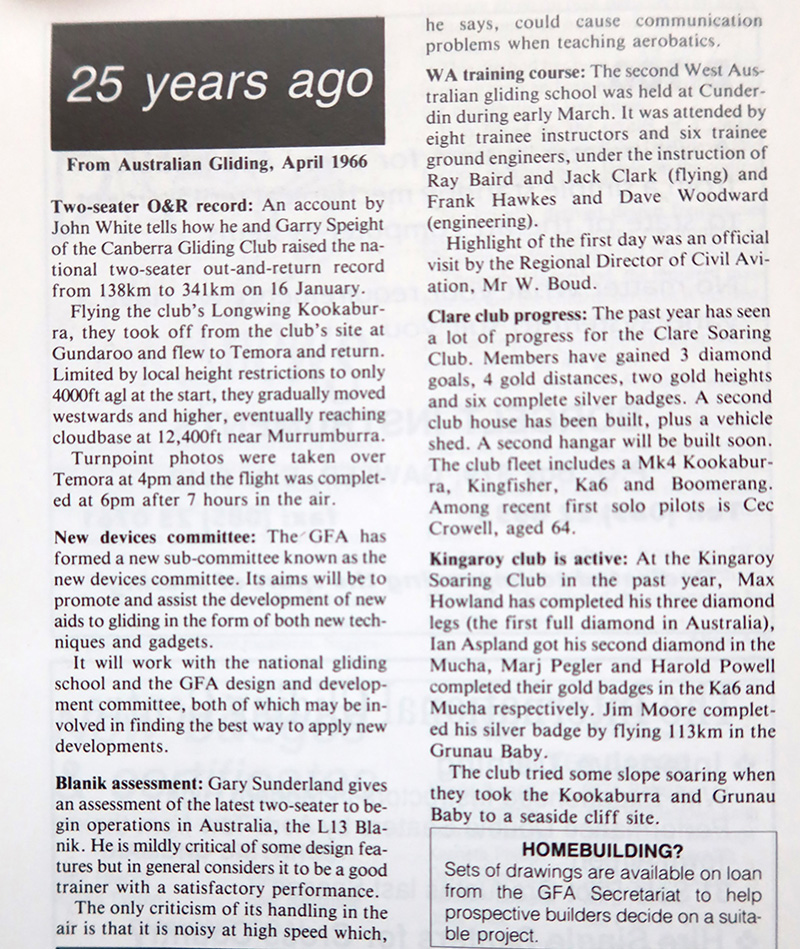
From Australian Gliding 1991 a look back in history.
THE WAY WE WERE
TERRY CUBLEY GFA PRESIDENT 1991 - 94
The 1980s and ‘90s were a very active time in gliding and brought significant changes to the structure and management of GFA. This is just a short summary of some of the activities undertaken at the time that I was GFA president from 1991 to 1994 and the years leading up to that.
I joined the Geelong Gliding Club at Bacchus Marsh as a 15 year old in November 1968 and progressively took on roles in the Club, including President and CFI, over the first 12 years. Of course, I did lots of flying, too, averaging 100 hours per year.
In the mid ‘80s I became Victorian Soaring Association (VSA) President and took on roles in the GFA including Convener of the Sports Committee. I became active in International gliding, competing in world championships in the USA at Hobbs, Italy at Rieti and Australia at Benalla.
Australia had run a world championships in Waikerie (SA) in 1974 and we ran the world comps at Benalla in 1987. These events helped to promote our sport with an ensuing growth in activity and memberships.
GFA Membership Numbers
These numbers were based on club returns, and quite a few clubs did not submit any data, so the number were probably higher than reported.
The Australian Gliding magazine was produced in South Australia and they effectively became the membership database for GFA.
As best as I can find, GFA membership in 1969 was 2,207 (about the same as in 2024).
1972 – 2,338 including 52 women
1975 – 3,000
1977 – 5,100 (impact of the Waikerie WGC)
1989 – 4,054
Unfortunately, there has been a slow but steady decline in membership since 1990.
GFA management
GFA ran an Annual Council Meeting (ACM) that members were invited to attend. It was the equivalent of our current AGM, but much larger. The GFA structure comprised of an Executive and two councillors from each state, with a number of other officers attending. It was typically held over two days.
Communication across the GFA was much more difficult, and relied on many handwritten letters and postage, which was improved by the use of Fax. Some of the handwriting has to be seen to be believed.
In the 1990s we introduced a strategic planning event labelled the ‘Cobbitty Accord’ at Roger Woods’ place in Cobbity, NSW. It saw many new ideas reviewed with many implemented, and it was good fun also. We were well hosted by Roger and Brenda Woods.
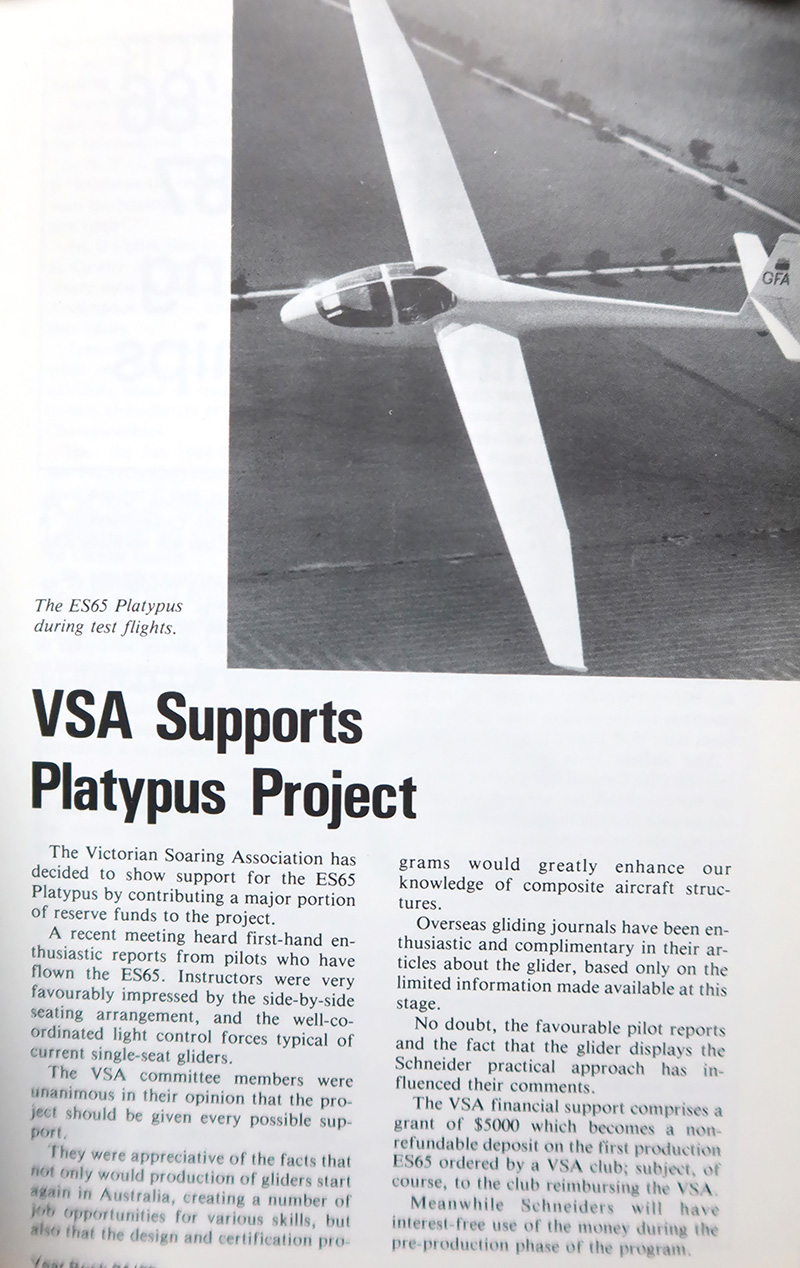
The GFA considered investing in glider manufacturing.
Memorable topics addressed at ACMs in the 1980s included
1. ES65 Platypus
A proposal was made for GFA to purchase the rights to manufacture the ES65 from Harry Schneider (I reacall that the price was about $250k) and then manage the manufacture. It was the first fibreglass glider designed and built in Australia and had a huge emotional connection to many of our members who had learned to fly in the ES52 Kookaburra. The two sides of the argument were the opportunity to manufacture in Australia, against the idea that glider manufacture was not within the realm of GFA responsibility. The argument raged for two years and eventually the decision was made not to get involved. The Platypus was an excellent glider with very nice flying characteristic and it is still owned by a syndicate at Bacchus Marsh.
2. Auto Tug
Dave Sharples from Queensland proposed to modify a Pawnee by installing a Ford V6 engine. The GFA supported this project with some funds and by seeking CASA approvals. Dave spent many years and many dollars to develop the concept and then modify a Pawnee, which was operated by Kingaroy SC. It was very successful, being powerful and cheaper to operate. A similar option was developed and marketed by Michael Shirley with some success, but it created a big divide in the movement because the purists wanted to retain the Lycoming.
Changes introduced in the 1990s
1. Introduction of the BBL insurance policy in 1992
2. Agreement to relocate the GFA office away from Essendon Airport
3. Implementation of a membership database at the GFA office.
4. Restructure of the GFA, reducing staff levels and costs. This was a response to the loss of funding from CASA and the Sports commission, and the recession in Australia with very high interest rates. GFA staff was reduced from 7 to 4, mainly from Airworthiness, which created a lot of tension.
5. Introduction of sporting coaches alongside Instructors in 1992.
6. Janus Fatigue investigation, run by Alan Patching and resulting in acceptance by OSTIV and manufacturers as justification for increasing the hours fatigue limit on fibreglass gliders.
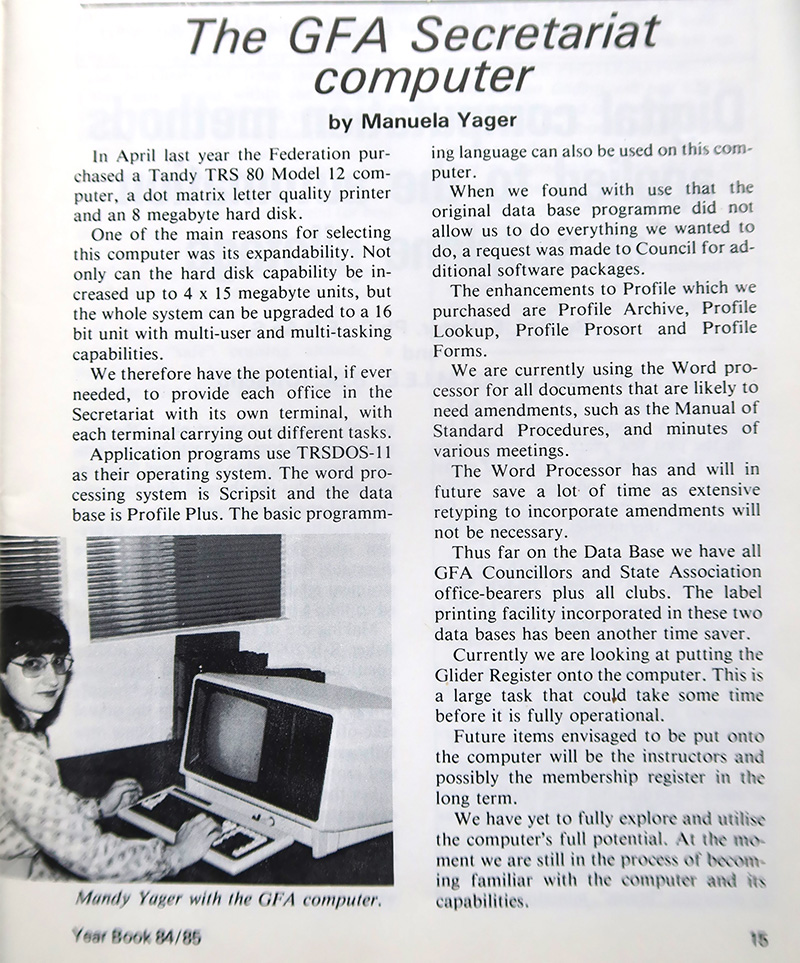
In 1984 the GFA purchased its first computer. It had less computing power than a smart watch has today.
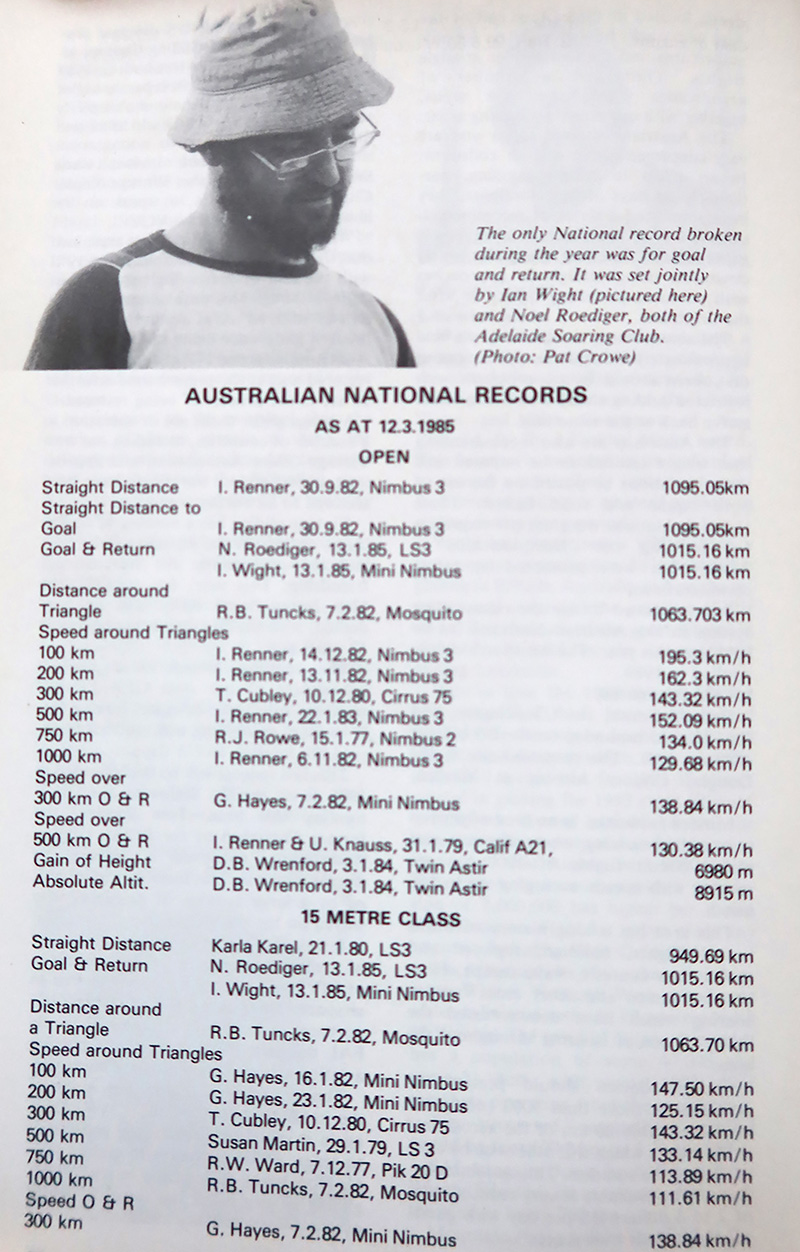
Record flights in 1985.
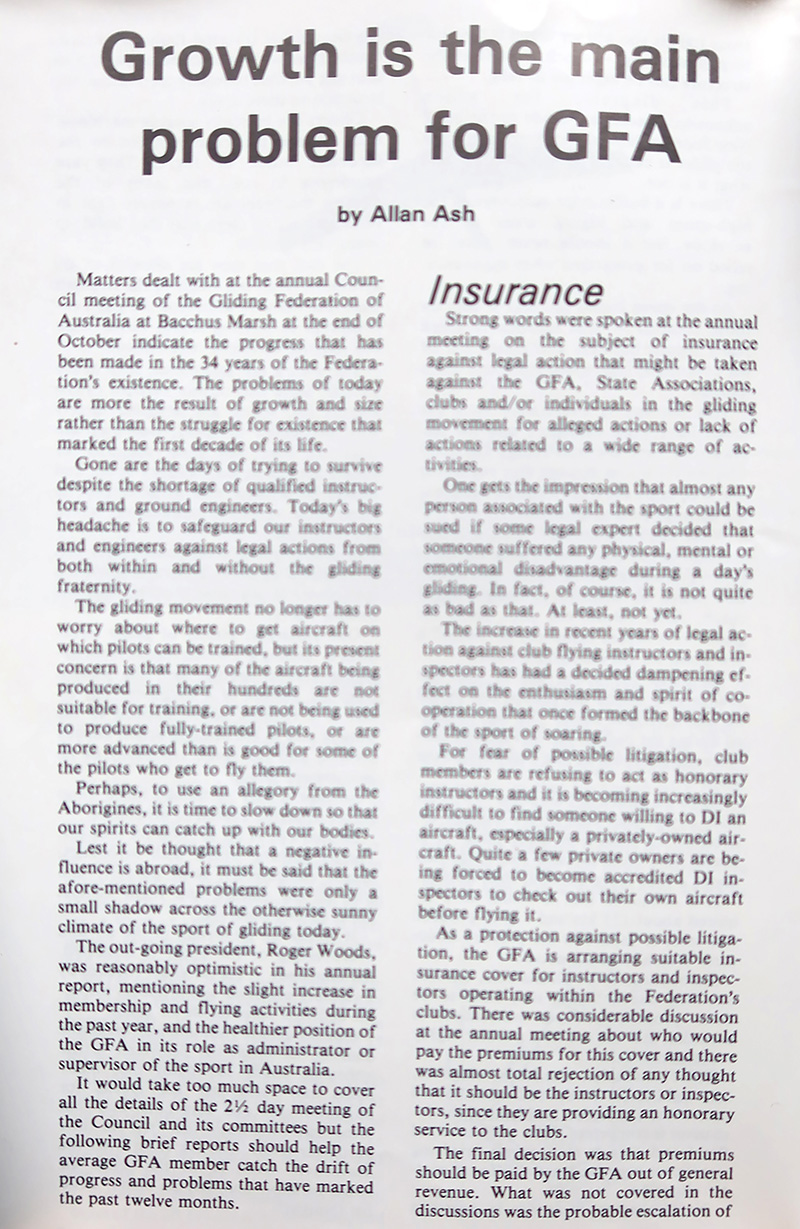
The GFA's main challenge in 1984 was managing growth.































